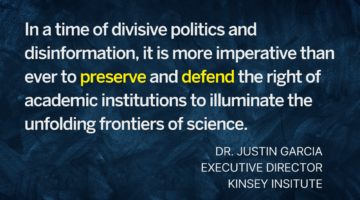Do We Need Laws Restricting Sex Offenders’ Activities On Halloween?
October 22, 2015 by Justin Lehmiller
In the weeks leading up to Halloween, it has become tradition for the media to run article after article warning parents that sex offenders may use the holiday as a means of sexually exploiting children. This has created such a panic that lawmakers across the country have even begun to pass laws restricting the activities of convicted sex offenders on Halloween, or that require police officers to check up on them during Trick or Treat hours. Are such laws truly necessary, though? Is there really an increased risk of sex crimes on Halloween in the first place? Let’s take a look at the data.
In a 2009 article published in Sexual Abuse: A Journal of Research and Treatment, national crime rate statistics from 1997-2005 were analyzed in order to determine whether sex offenders are taking advantage of Halloween in order to harm children [1]. The researchers looked at various forms of rape and sexual assault across each of these years, but only in cases where the victims were aged 12 and younger and where the perpetrators were not part of the victims’ families (the data were limited to these circumstances because the primary concern with Halloween-related sex offenses involves strangers). Halloween was defined as a three-day period, which included Halloween itself and the two preceding days. This was done in order to account for variations in the day of the week Halloween falls any given year, as well as variations in when trick-or-treating is scheduled.
For each of the 9 years of data, the results revealed no significant increase in sex offenses on Halloween or any of the days leading up to it. Moreover, the nature of the sex crimes committed on Halloween was no different from average.
This is not to say that Halloween poses no risk for sexual violence or that no one has ever tried to exploit this holiday for such purposes. Rather, what the data reveal is simply that there is no evidence of greater risk on Halloween. Thus, instead of applying enhanced vigilance to sex crimes on October 31, perhaps we should direct our extra attention toward the risks we know are elevated, such as the fact that kids have a significantly increased chance of being hit by cars.
Compared to all other days of the year, children are four times as likely to be struck and killed by a motor vehicle on Halloween [2]. That’s an important risk, but one that few journalists and lawmakers bother to mention at all this time of year.
It is also important to note that there is growing evidence that blanket legal restrictions on where sex offenders can live and where they can go do not necessarily make us any safer. These laws seem to offer little more than an illusion of safety and, in fact, may be counterproductive to the extent that they force sex offenders into homelessness, in which case it becomes harder to monitor them and provide treatment. A big part of the problem is that these laws are predicated on the false belief that all sex offenders pose a grave risk to children. Not all offenders have sexual interest in children and not all offenders are likely to re-offend. These laws could potentially be used to greater effect if they were instead based on a more individualized assessment of risk, as opposed to treating sex offenders as a monolithic group.
In short, there doesn’t seem to be much to back up the idea that there are more sex crimes on Halloween, and all of the media and political panic about this appears to be overshadowing the known risks to children’s safety. We absolutely should be concerned with protecting children on Halloween, but let’s make sure to put our enhanced vigilance to the greatest possible effect.
Want to learn more about Sex and Psychology ? Click here for previous articles or follow the blog on Facebook (facebook.com/psychologyofsex), Twitter (@JustinLehmiller), or Reddit (reddit.com/r/psychologyofsex) to receive updates.
[1] Chaffin, M., Levenson, J., Letourneau, E., & Stern, P. (2009). How safe are trick-or-treaters? An analysis of child sex crime rates on Halloween. Sexual Abuse: A Journal of Research and Treatment, 21, 363-374.
[2] Centers for Disease Control. (1997). Childhood pedestrian deaths during Halloween—United States, 1975-1996. Morbidity and Mortality Weekly Report, 46, 987-990.
Image Credit: 123RF.com/blankstock
You Might Also Like:

Dr. Justin Lehmiller
Founder & Owner of Sex and PsychologyDr. Justin Lehmiller is a social psychologist and Research Fellow at The Kinsey Institute. He runs the Sex and Psychology blog and podcast and is author of the popular book Tell Me What You Want. Dr. Lehmiller is an award-winning educator, and a prolific researcher who has published more than 50 academic works.
Read full bio >

